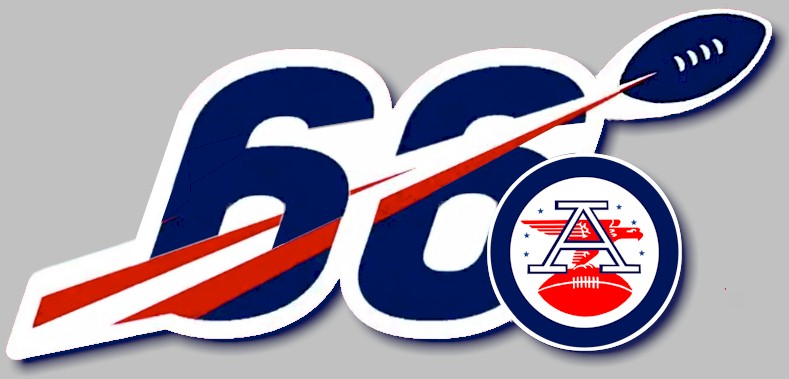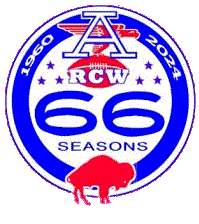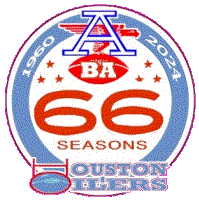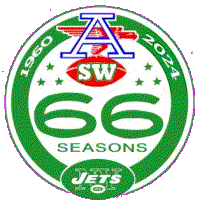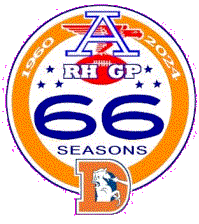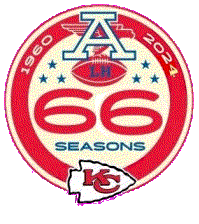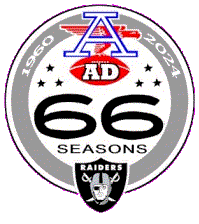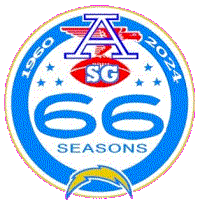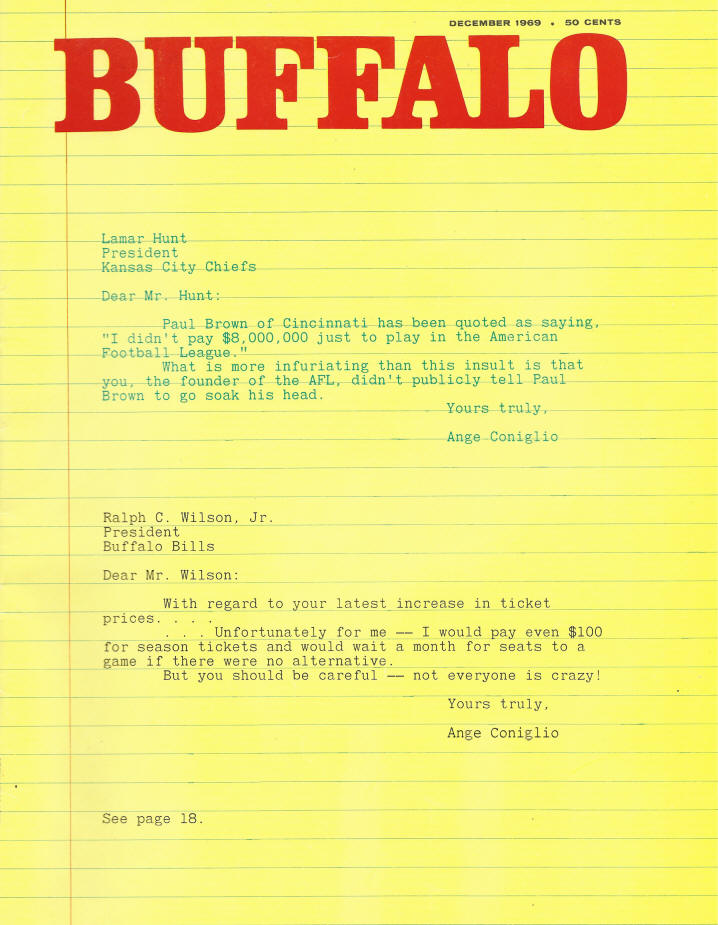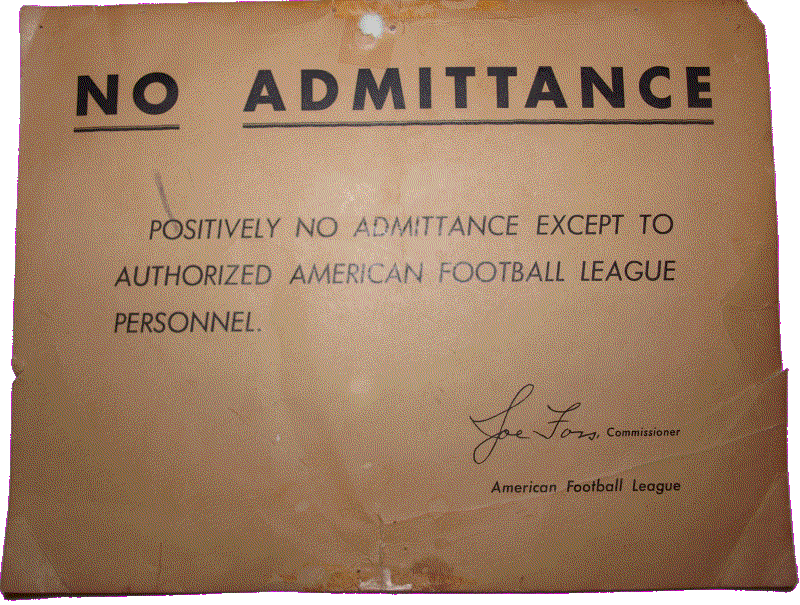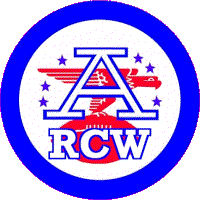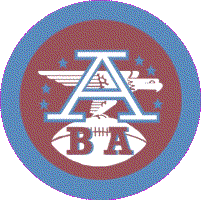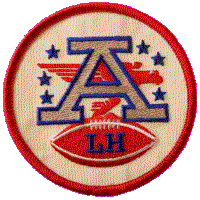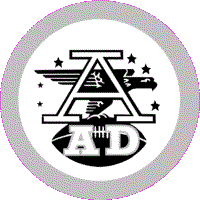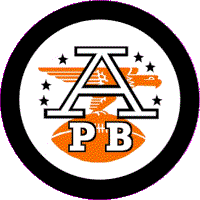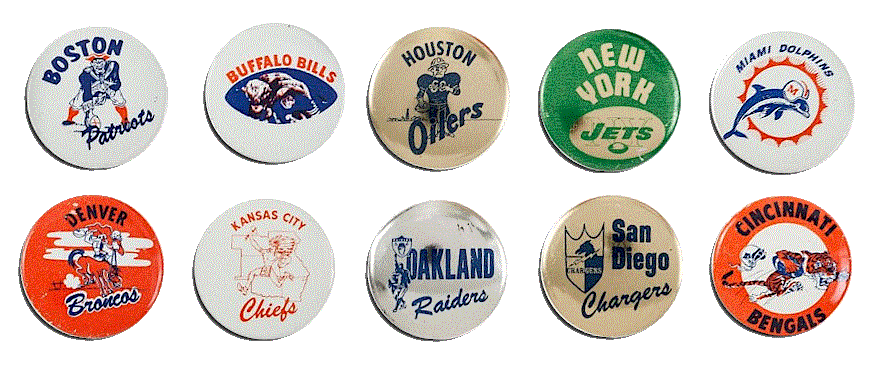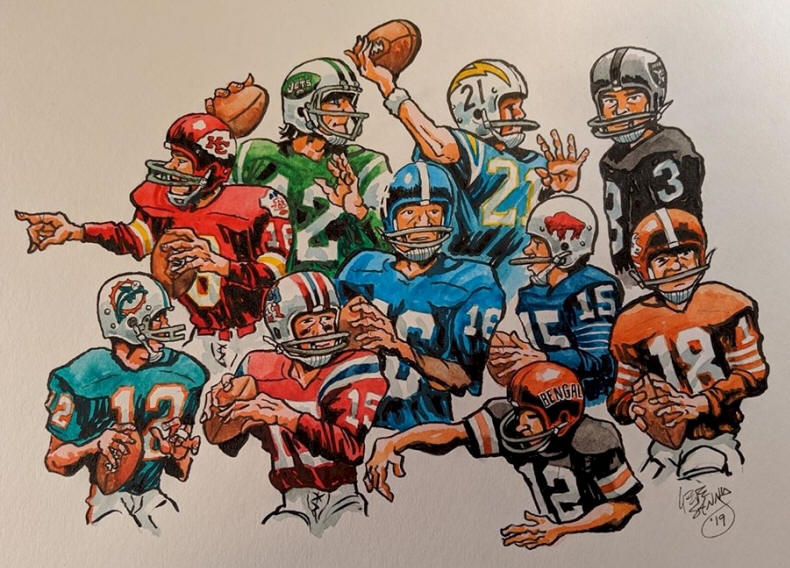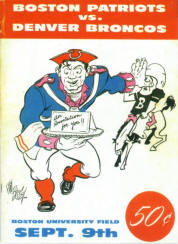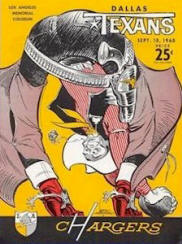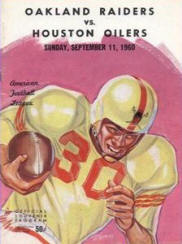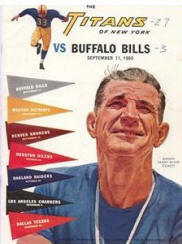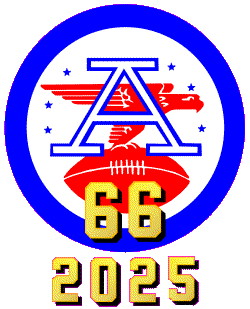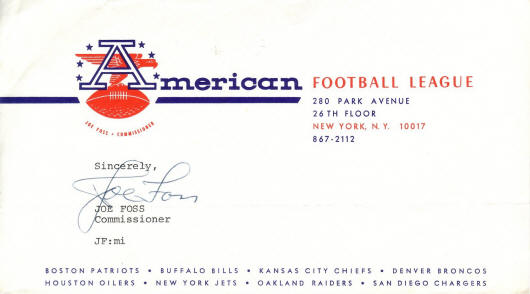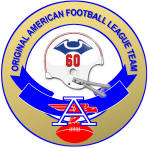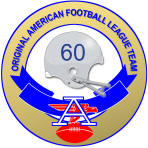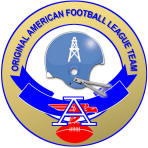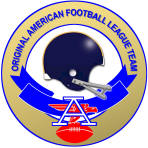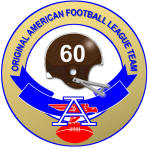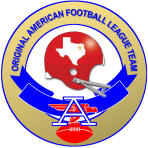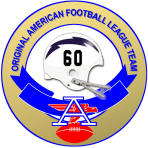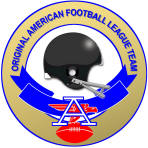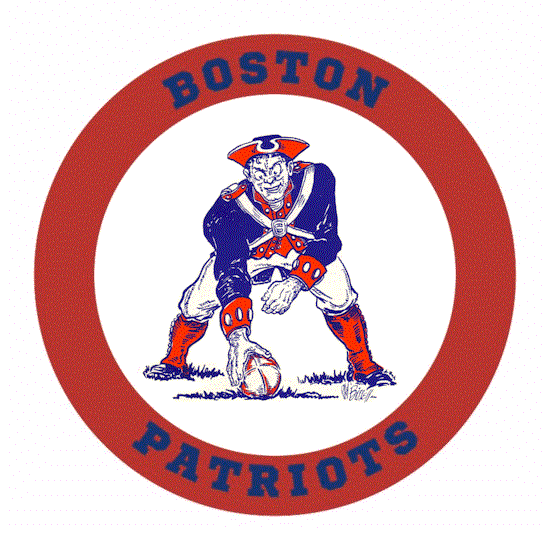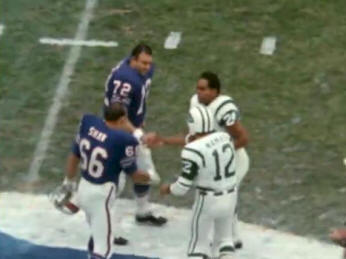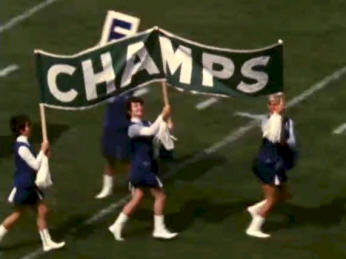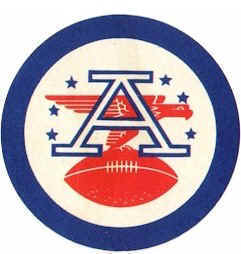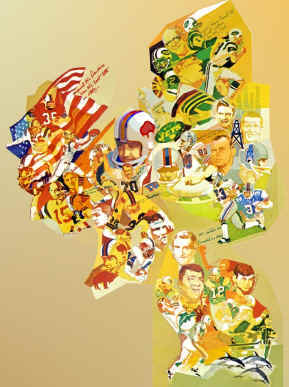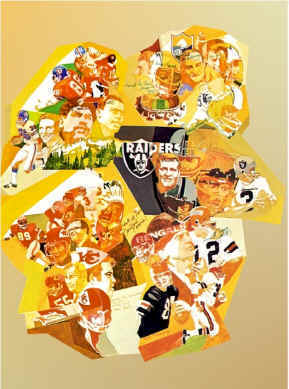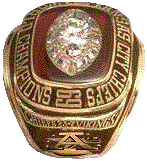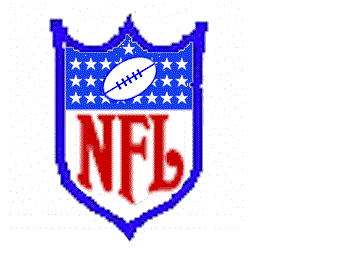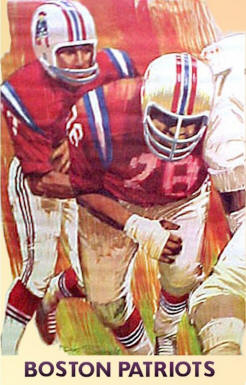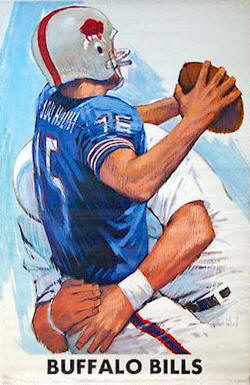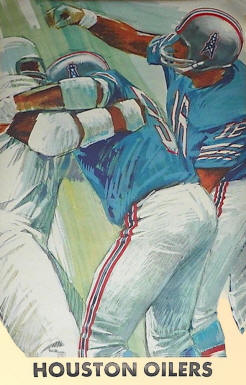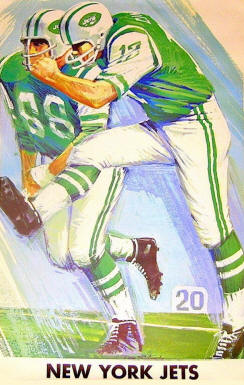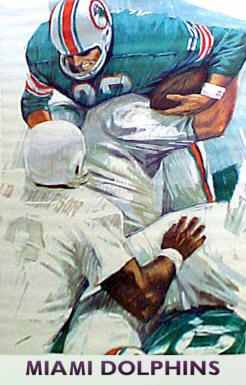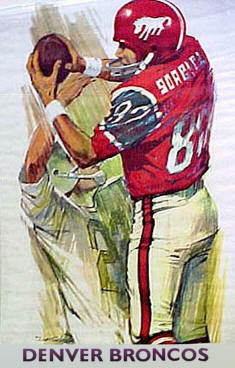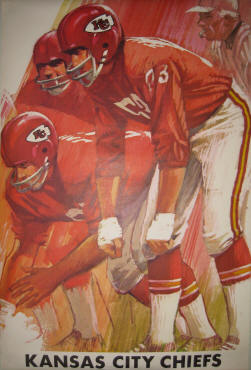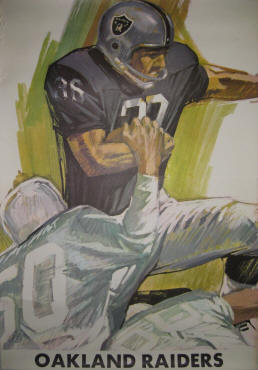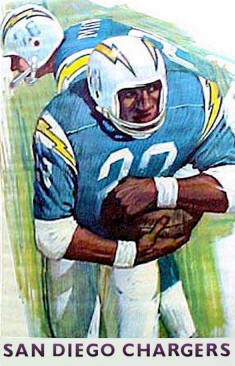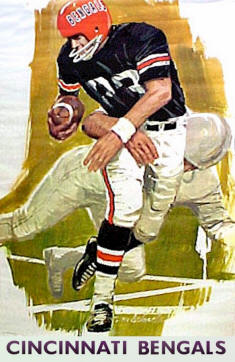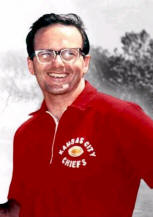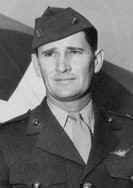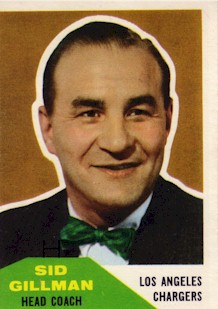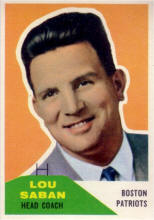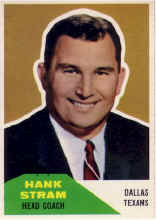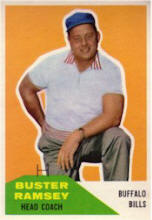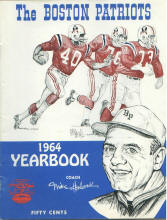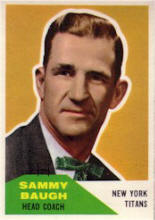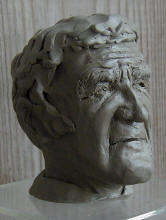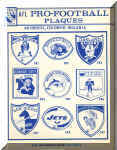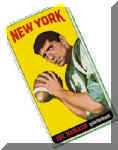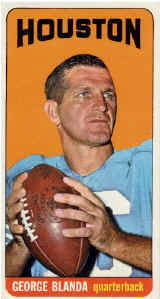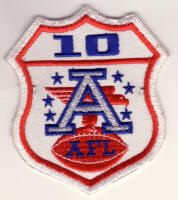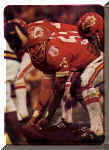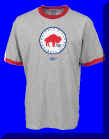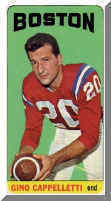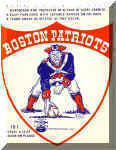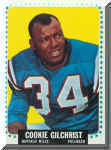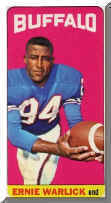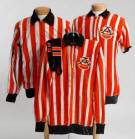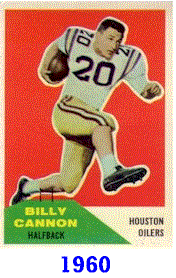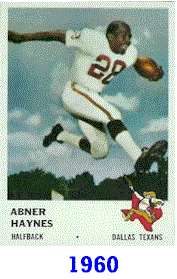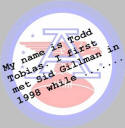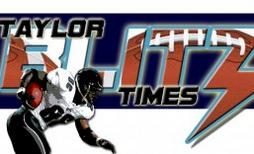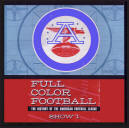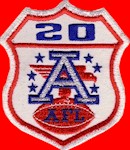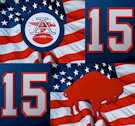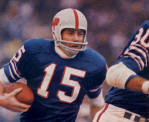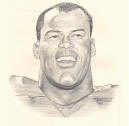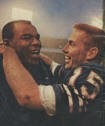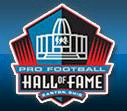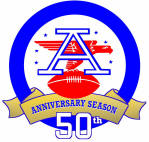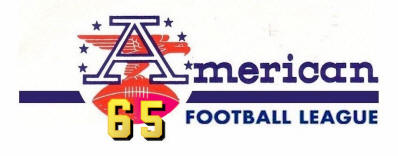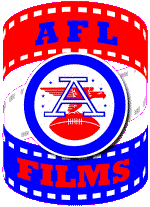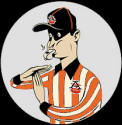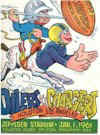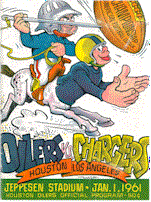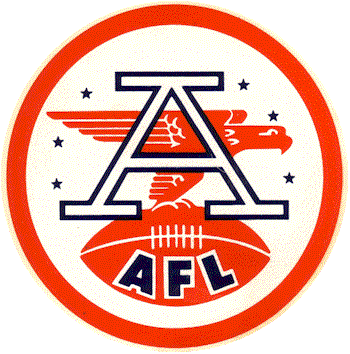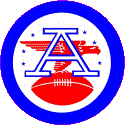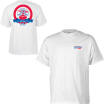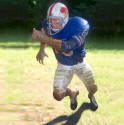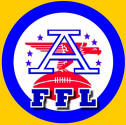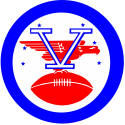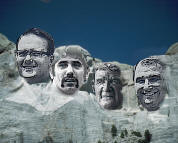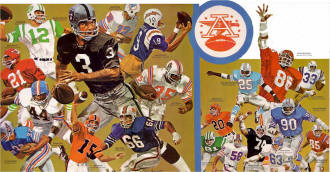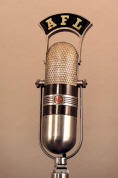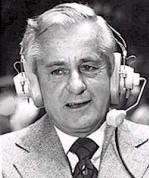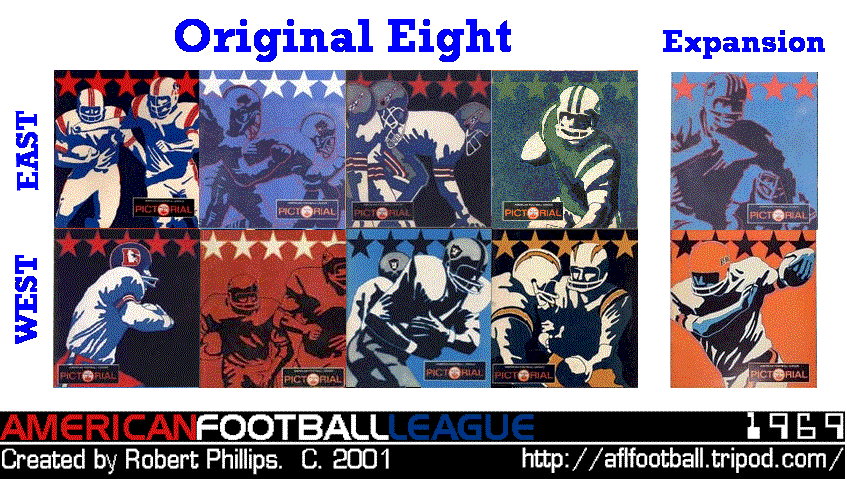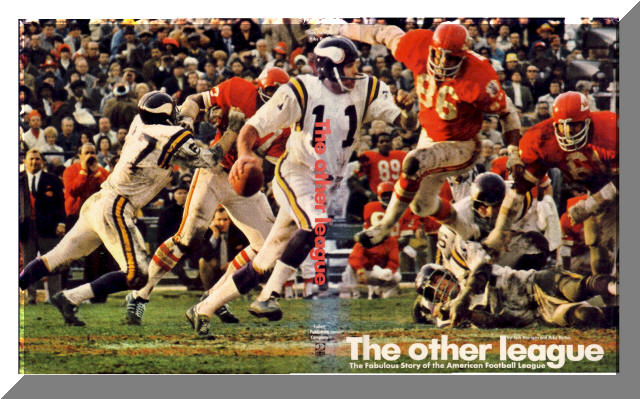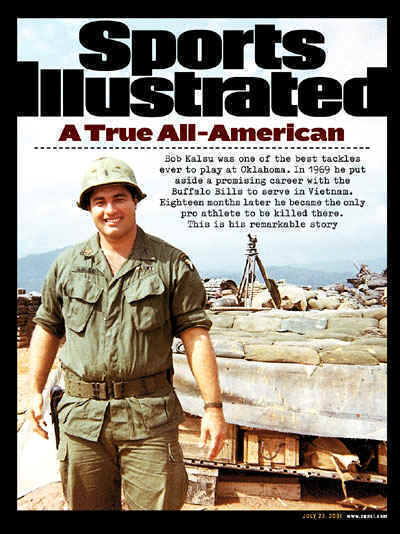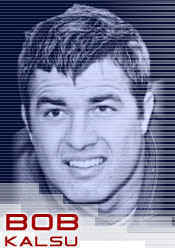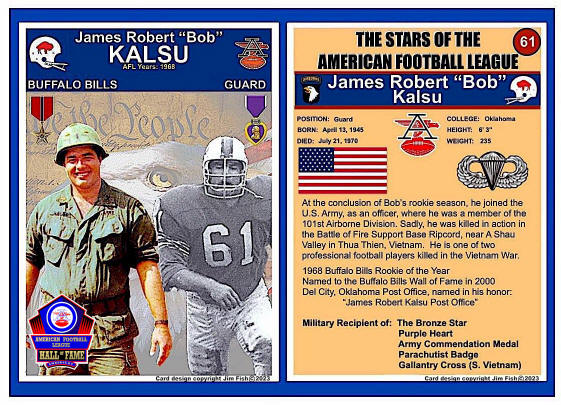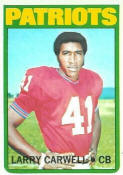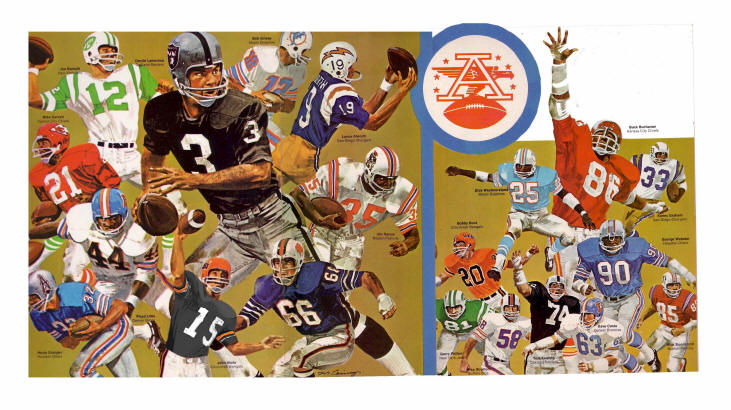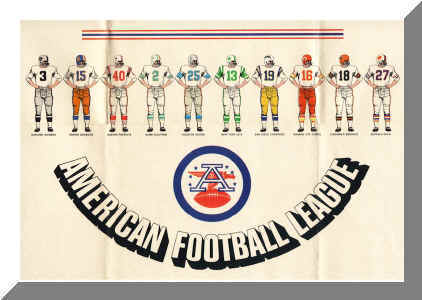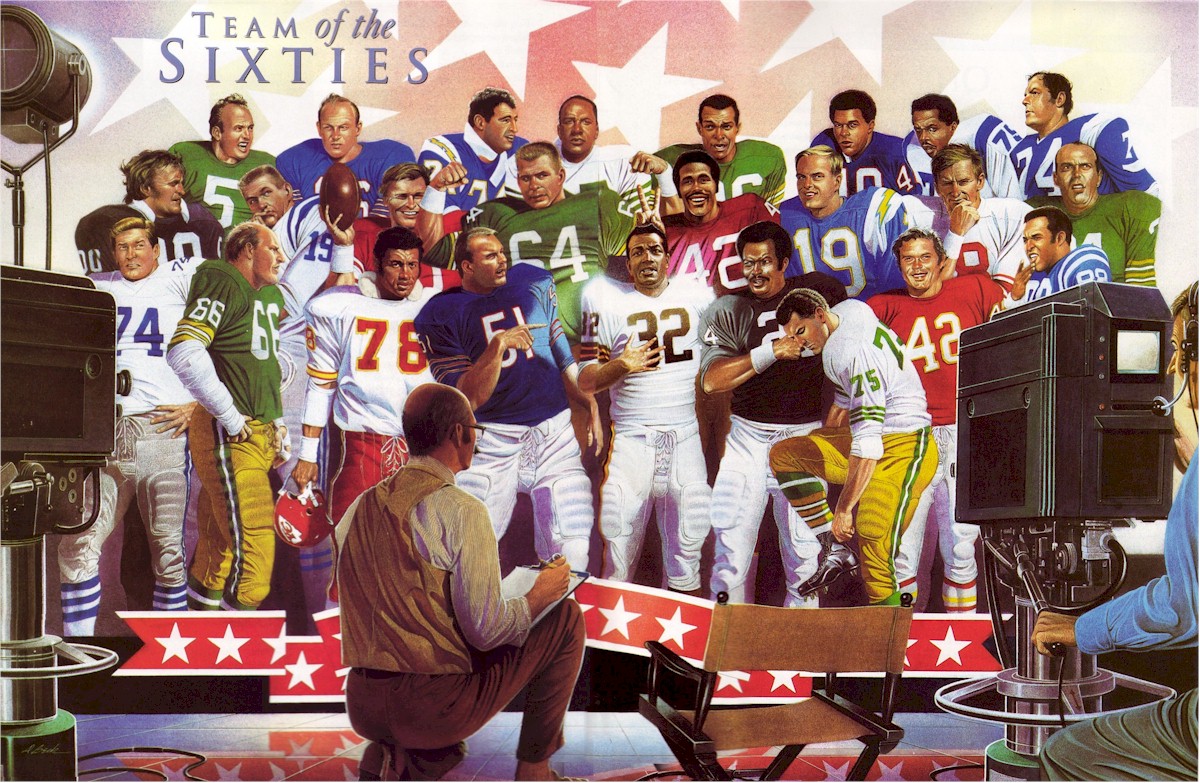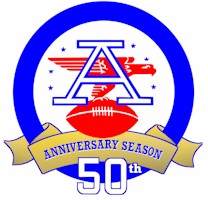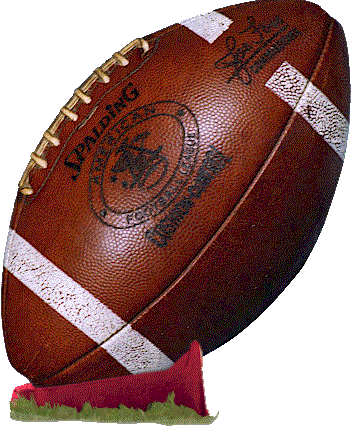Of all the leagues that have attempted to challenge the dominance of an established league, the American Football League was the only one to be truly successful. The American Football League was the only league in North American pro sports ever to have merged with another major league and have all its teams continue to exist. No AFL teams folded and only two teams changed cities during the league's 10-year existence. Further, the league that merged with it adopted many of the innovative on- and off-field elements introduced by the AFL, including names on player jerseys, official scoreboard clocks and gate and revenue sharing. The AFL's challenge to the NFL also made possible the only four World Championship Games ever played between the champions of two major football leagues.
Lamar Hunt's vision brought a new Professional Football league not only to California and New York, but to parts of the nation that did not previously have the sport: New England, Colorado and Texas. It would later be brought to Missouri and Florida. The AFL also adopted the first-ever cooperative television plan for Professional Football, in which the league office negotiated an ABC-TV contract, the proceeds of which were divided equally among member clubs.
An AFL legacy seldom acknowledged is the fact that four cities obtained NFL franchises as a direct result of the competition the old league was forced into by the AFL: Dallas' Cowboys were created to drive the AFL's Texans out of business; the Minnesota Vikings were the NFL franchise given to Max Winter for abandoning the AFL (the AFL franchise later went to Oakland); the Atlanta Falcons franchise went to Rankin Smith to dissuade him from purchasing the AFL's Miami franchise; and New Orleans was given a franchise to repay the Louisiana congressmen who supported the bill permitting the AFL-NFL merger. It is most likely that if the AFL had never existed, neither would the Dallas Cowboys, the Minnesota Vikings, the Atlanta Falcons, nor the New Orleans Saints.
The AFL's more liberal policies towards black players and its rigorous recruitment of players from black and small colleges revealed a new source of talent for Professional Football. AFL scouts, including blacks like Tom Williams and the first full-time black scout, Lloyd Wells, recruited and opened the gates for the hundreds of talented blacks who subsequently contributed immeasurably to the sport, following in the footsteps of Abner Haynes, Buck Buchanan, Lionel Taylor and the like.
The AFL's free agents came from several sources. Some were players who could not find success playing in the NFL. The sports media in established NFL cities called them "NFL rejects". But the success of men like the Oilers/Raiders' George Blanda, the Chargers/Bills' Jack Kemp, the Texans' Len Dawson, the Titans' Don Maynard, the Raiders/Patriots/Jets' Babe Parilli, the Pats' Bob Dee and many others, made that sobriquet questionable. Another source of free agents was the Canadian Football League. In the late 1950s, many players released by the NFL, or un-drafted and unsigned out of college by the NFL, went North to try their luck with the CFL, and later returned to the states to play in the AFL. In the league's first years, these included the Broncos' Frank Tripucka, the Pats' Gino Cappelletti, the Bills' Cookie Gilchrist and the Chargers' Tobin Rote, Sam Deluca and Dave Kocourek. Finally, there were the true "free agents", the walk-ons, the "wanna-be's", who tried out in droves for the chance to play Professional Football.
The American Football League took advantage of the burgeoning popularity of football by locating teams in major cities that lacked NFL franchises, and by using the growing power of televised football games (bolstered with the help of major network contracts, first with ABC and later with NBC). It featured many outstanding games, such as the classic 1962 double-overtime American Football League championship game between the Dallas Texans and the defending champion Houston Oilers. It was the longest Professional Football championship game ever played, and is still considered one of the best.
The AFL appealed to fans by offering a flashier alternative to the conservative NFL. Team uniforms were bright and colorful. Long passes ("bombs") were commonplace in AFL offenses, led by such talented quarterbacks as John Hadl, Daryle Lamonica and Len Dawson. While the old league kept its time on a watch in the referee's pocket, occasionally announcing the time remaining, the AFL put it on the scoreboard clock, for fans to keep track of at a glance. While CBS had a fixed camera on the fifty yard line for its NFL coverage, ABC and the AFL had moving sideline cameras and were the first to "mike" players during games.
Another attractive feature of the American Football League was its competitive balance. In the original eight-team league, in a fourteen game schedule, each team played every other team twice. Every team had the same "strength of schedule", so the division champions were clearly the best teams in each division. Further, the league championships were evenly divided: five were won by Western Division teams, five by the Eastern Division; and of the original eight teams, all but two (Denver and Boston) won at least one AFL title, and only one did not make the playoffs at some time during the league's ten-year existence.
The AFL clearly matched or outshone the old league in many cases. Examples abound: Lance Alworth of the Chargers was arguably the best receiver of the 1960s; Johnny Robinson of the Chiefs, although he has been ignored by the "pro football" hall of fame, was the equal of any NFL defensive back of the era; and the 1964 Buffalo Bills defense allowed their opponents only 300 rushing attempts and held them to a Professional Football record 913 yards rushing, while recording fifty quarterback sacks in a fourteen-game schedule.
The AFL achieved its success in spite of sparse coverage by the print and electronic media. CBS-TV, which then carried NFL games, refused to give AFL game scores on its football broadcasts. William N. Wallace of the New York Times and Tex Maule of Sports Illustrated ridiculed the new league, and even after the AFL was established, SI gave full-page color action shots of the NFL, while it used black and white photos in its AFL coverage. This bias is in many cases still evident today: in the reporting of AFL players' experience as "NFL experience" (e.g. Ron McDole is called a "17-year NFL veteran", when in actuality, he played eight of those years in the AFL); in the restoration of the Browns' name, colors, and records to Cleveland after the team moved, while Houston, the city that hosted the first two AFL champions, is forbidden to use the name "Oilers"; and in the inexplicable absence of AFL stars like Haynes and Robinson from the "pro football" hall of fame.
These pages are meant to right the wrongs that American Football League fans have had to put up with ever since the AFL blew up its first "Spalding J5-V". Enjoy the photos and stories, check the links listed below, and above all,

